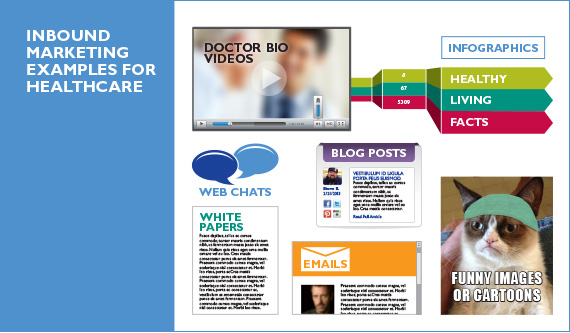Engage patients with inbound marketing
Content creation strategies for information-hungry audiences
Healthcare consumers are tuning out interruptive marketing and instead, actively seeking relevant information through search engines and social networks. In this issue, we’ll look at how hospitals and physician practices can use inbound marketing techniques to engage these information-hungry patients and provide a depth of content that traditional marketing doesn’t allow.
Outbound Marketing vs. Inbound Marketing
Traditional healthcare marketing (a.k.a. outbound marketing) typically uses one-way, interruptive communication methods such as TV commercials, billboards, direct mail pieces, and e-mail blasts. With outbound marketing, the hospital remains in control of the information flow by pushing its messages out to prospective patients. Unfortunately, when used alone, outbound marketing methods aren’t as effective as they used to be because today’s consumers don’t perceive advertising to be as credible or informative as they used to. They are looking for more information and more depth than they can find in traditional advertisements.
In contrast, inbound marketing is the act of creating relevant, credible content, and then helping healthcare consumers find it. It’s a difference in how your audience receives your message. Rather than trying to ”sell them” through interruptive messaging, inbound marketing puts the control into the hands of the patient and allows them to find your blog posts, informational videos, and interviews on diseases, treatments, products, physicians, hospitals, and healthy living, on their own terms. Healthcare information is more credible when patients find it themselves, so it makes sense to post it where and when they need it.

The line between outbound and inbound marketing can get blurry. For example, e-mail marketing can be considered both inbound and outbound marketing; it all depends on why the prospective patient receives the e-mail. Did you buy an e-mail list and send out a blast about your new office opening? That’s outbound marketing. Did you create an email capture or subscription list and send out recent blog posts to patients who opted-in to your e-mails? That’s inbound marketing. As you can see in this scenario, patients would easily be able to tune out your solicitation, but your blog post review will help to pull prospects closer to your hospital by creating web engagement that can ultimately convert them to patients.
Once a piece of content is created, you can place links to the health information patients are looking for on the channels where they are spending their time, such as social media platforms, news sites, blogs and YouTube. You can also make it easy to find through SEO, keywords, and backlinks. Outbound marketing (online display, social media, outdoor and even television advertising) can be used in conjunction with inbound to bring attention to your content and help consumers find it faster.
To learn more, download the white paper
“Inbound Marketing: Nourishment for Content-Hungry Patients”

